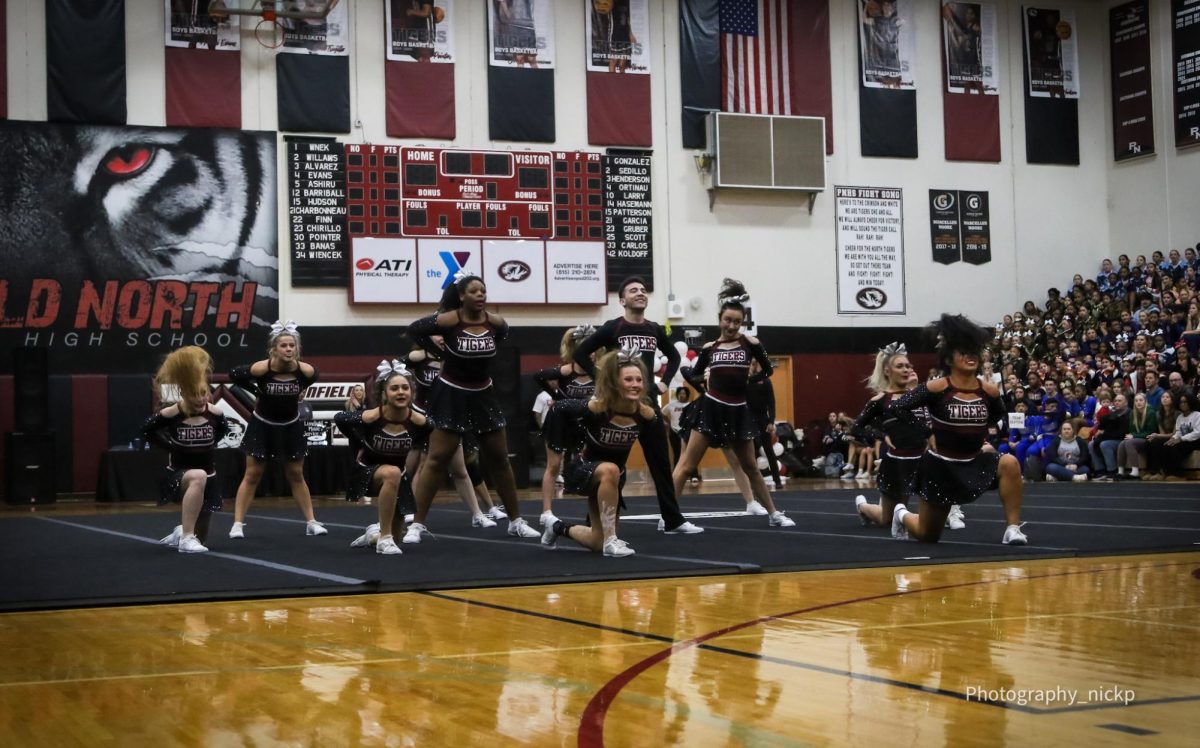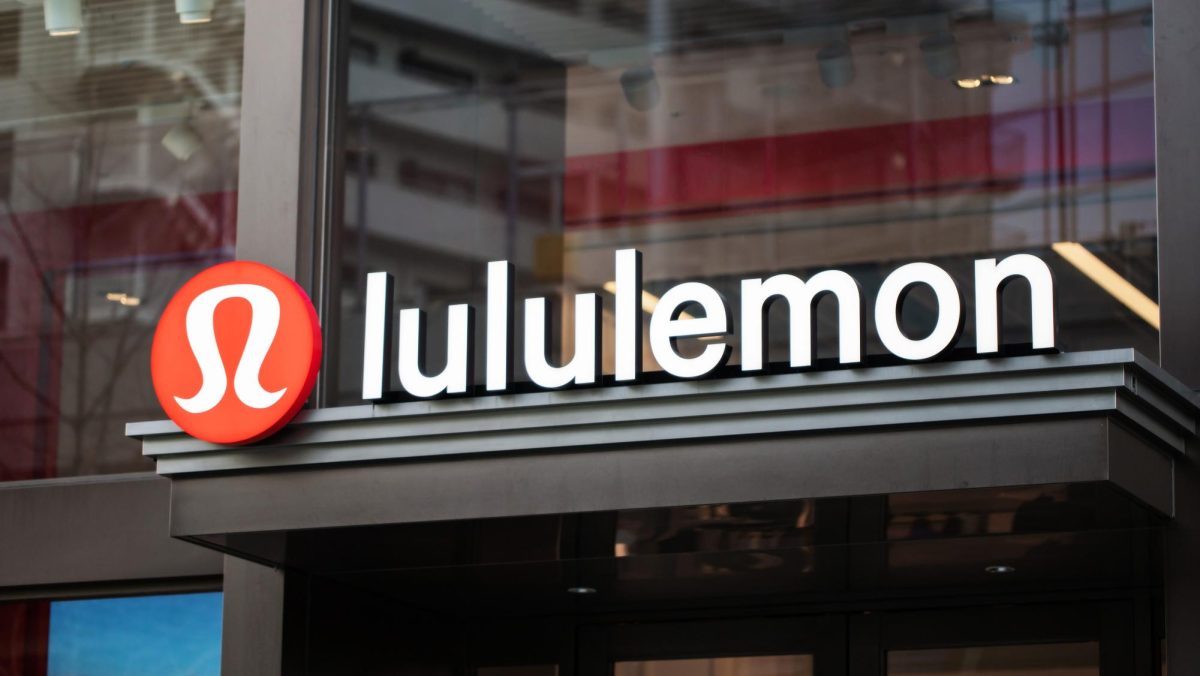Government Response to Pandemic
May 6, 2020
In late November 2019, The Pentagon’s National Center for Medical Intelligence (NCMI) circulated a report identifying a contagion sweeping through Wuhan, China. ABC News reported, “Analysts conclude it could be a cataclysmic event.”
By Apr. 23, 2020, China recorded 83,798 cases and the death toll reached 4,642.
The first case of Coronavirus later identified as Covid-19 appeared in China’s Hubei providence. The doctor who identified the virus, Dr. Li Wenliang, sent out warnings to the Chinese people on social media, warning of a potential outbreak. The Chinese government quickly denied the warnings from Li.
“It’s not important to me if I’m vindicated or not,” Li said in an interview from a quarantine room with Chinese publication Caixin. What’s important is that everyone knows the truth.”
For years activists and journalists have faced torture and imprisonment for exposing the Chinese government for its injustices and misinformation to the people of China. On April 7, 2020, an influential critic of the Chinese Communist Party, Ren Zhiqiang went missing after writing an essay criticizing the government’s ability to handle the outbreak.
“The reality shown by the epidemic is that the party defends its own interests, the government officials defend their own interests, and the monarch only defends the interests of the core,” stated a translated version of Zhiqiang’s essay.
President Xi Jinping of the Chinese Communist Party didn’t warn the public until Jan. 20, but by then more than 3,000 people had been infected after almost a week of total silence. The delay set the stage for a pandemic that has taken the lives of over 208,000 people around the globe.
The Associated Press reported citing expert testimony on infection data.
“Doctors in Wuhan were afraid,” said Dali Yang, a professor of Chinese politics at the University of Chicago. “It was truly intimidation of an entire profession.”
The Chinese government is no stranger to a cover up or any form of political uprising and social change. In the summer of 1989, elected student leader Chai Ling and activist Feng Congde took to the streets of Beijing to fight for democracy, and the government has been trying to erase it ever since.
“The last time so many people had been awakened was 1989; I want freedom of speech,” a user wrote under the now censored “I want freedom of speech” hashtag on the popular Chinese chat platform known as WeChat.
The Chinese government has denied any potential “cover up” of the Covid-19 outbreak, after deaths in China rose to nearly 50%.
“There’s never been a cover up, and we will never authorize any cover up,” Chinese foreign ministry spokesperson Zhao Lijiang said.
China’s suspected efforts to cover up the Coronavirus has led to other leaders around the world following China’s example. Brazilian leader Jair Bolsonaro accused the mainstream media of making the virus sound worse than it really was.
“During the past year, obviously, we had moments of crisis,” Bolsonaro said. “A lot of that is fantasy, and coronavirus which is not what all the mainstream media makes it out to be.”
Due to Bolsonaro’s anti-science approach to Covid-19, the virus swept through the country, infecting local business owners, and important members of the country’s political elite. As of Apr. 23, the country had a total of 49, 492 confirmed case and 3,313 deaths.
Flavio Dino, the leftwing governor of the north-eastern state of Moranhao, said, “[Bolsonaro] wastes so much time with these illusions, these deliriums, these conspiracies, these fantasies, these scuffles, and when you’re facing a serious crisis, this is catastrophic.”
Covid-19 has been particularly widespread in Brazil’s tightly compacted slums known as favelas where the term “social distancing” is considered a dream to many Brazilians that call the favelas home.
“How are we going to isolate a person who tests positive, knowing there are families of five or six people living in a three-room house?” said Isabela Souza, director of the Observatorio de Favelas, a national nonprofit based in Rio’s Mare favela that is focused on fighting for the rights of the peripheral communities.
Before the virus, Brazil was fighting its unstable economy under Bolsonaro’s watch. On Mar. 25, Brazil erupted with the sound of banging pots and pans from the windows of apartments in Rio de Janeiro and shouts of “Bolsonaro Out.”
“We can no longer accept a person like this as our president,” said Wilma Dutra de Olivera, a language teacher from Leblon, a neighborhood in Southern Rio de Janeiro.
On Apr. 20, Bolsonaro joined protesters against coronavirus policies in direct opposition to social distancing guidelines for the Brazilian people.
“It’s the kind of behavior that no responsible human would engage in,” said Intercept Brazil co-founder Glenn Greenwald.
By March, The United States after looking at Brazil and Italy, wanted to get the virus contained but failed to respond due to the rapid spread of Covid-19, the sheer magnitude of the virus and the effect it had on American society from the second it landed on U.S soil in early February.
In late January, President Trump was warned about a possible outbreak spreading throughout Wuhan China, and White House Trade advisor Peter Navarro wrote a memo on Jan.30, warning the president about a potential deadly virus, and that it would be in his best interest to simply close schools, business, and implement a travel ban to China. During news briefs, the president denied seeing the memo.
“It was a recommendation that he [Peter Navarro] had, I think he told certain people on the staff, but it didn’t matter I didn’t see it,” Trump said.
By late January, The United States began implementing travel restrictions to Europe and China as well as to ban all foreigners who have previously travelled to China, the ban in which through his eyes saved the country from Covid-19.
“I made the decision to close off China, that was weeks early. And honestly, I took a lot of heat. And I must say, doctors nobody wanted to make that decision at the time. It was very, very early,” Trump said during an extended Fox News interview from the White House on Tuesday Mar. 10. “Call it luck or call it talent. It doesn’t matter we made a great decision.”
Members from inside his administration, point to statements from doctors both inside and out of the administration supporting the China travel ban, which was later planned out to extend to Iran and Europe.
“By the time he imposed those measures we already had a community spread underway. And the failure to test guaranteed we didn’t catch or prepare for it,” said Jeremy Konyndyk, former director of the Office of Foreign Disaster Assistance during the Obama administration.
“Travel bans don’t help once the spread has already happened,” said William Hanage an associate professor of epidemiology at Harvard University.
The U.S effort to test for Covid-19 began on Feb. 4 when The Center for Disease Control (CDC) sent out hundreds of test kits to state and local public health labs as part of a step-up program to identify infection.
“I think history will lay the facts down correct,” said Robert Redfield director of the CDC.
“The real truth is the CDC did its job really in record time and developed the tests within 7 to 10 days.”
Early tests sent out by the CDC to labs did not work, and it took the CDC eight days to announce that this was a growing issue, and that they needed a little bit more time to get new kits out and critique the existing ones.
“We then said, don’t use it, let us take it back,” Redfield said, “And, in a couple of weeks we figured it out, corrected it, and got it out.”
In those couple of weeks however, the virus had already started to spread inside the United States, and large cities like Seattle and New York were already experiencing infections.
The CDC encouraged other organizations like the Food and Drug Administration, to allow hospitals and commercial labs to get tests on the market faster, and Redfield said the CDC only ensures that these tests get out, not promising people that they had the ability to do enough tests.
“But ensuring that America had widespread testing capacity for the novel pathogen is not the CDC’s job,” Redfield said.
In late February, Navarro, sent a second memo to the president saying the virus could kill up to two million Americans. In part “There is an increasing probability of a full blown COVID-19 pandemic that could affect as many as 100 million Americans.’’
Navarro also warned “The lack of immune protection or an existing cure or vaccine would leave Americans defenseless in the case of a full-blown coronavirus outbreak, on U.S soil.”
The federal government has been criticized for not being prepared. Before the Trump administration’s inability to send millions of promised test kits or protective medical gear to health care workers, National Security Advisor, John Bolton began dismantling the team in charge of pandemic response, firing its leadership in spring 2018.
“It’s the administration, perhaps they do that, people let people go,” Trump said.
On Apr. 1, at a White House press conference, President Trump stated he was committed to defeating the “horrible virus,” making its reign of terror on the country. He said he did not plan on a shelter in place across the country.
“States are different, I understand that Florida issued one today [Apr. 1]. That’s good. That’s great,” Trump said. “There are some states that don’t have much of a problem… you have to give a little bit of flexibility.”
Unlike other countries like Italy or Spain, there has not been a nationwide lockdown. Trump argues it’s an area that’s best discussed amongst governors. Republican led states such as Iowa, Texas and Missouri are among the final holdouts to issue stay at home directives.
“What president Trump could do is send a much clearer signal that he wants all governors to do a lockdown on their states, to guide them about what a lockdown would require and what the standard would be,” said Lawrence Gostin director of the O’ Neill Institute for Global Health Law at Georgetown University.
As a result of the CDC’s struggles to get the tests that are not only accurate, but show the data needed to fight Covid-19 in the United States, a growing shortage of medical supplies such as masks, gowns, and prescription drugs and other forms of protective medical equipment, commonly known as ( PPE).
“We could use body bags. And eye shields and gowns!” wrote an employee at a nursing facility in Long Island, New York.
In April, the organization, GetUsPPE.org put out a basic request form: What supplies do you need? and where are you? Within three weeks they had more than 7,000 responses, health care workers from many major hospital networks in the U.S begging for supplies. Some hospitals even resorted to reusing supplies.
“Our hospital has protective equipment for now,” but we’re reusing for as long as possible,” said Dr. Ranney, an AMA member (American Medical Association), who practices at Lifespan Rhode Island Hospital in Providence. “We’re reusing N95’s until they are soiled or don’t fit anymore, so potentially for days.”
The Trump administration has faced an immense amount of criticism for its slow, unresponsive approach to the Covid-19 pandemic, failing to take doctors, medical experts and health ministers seriously during this time of crisis, and instead condemning the World Health Organization (WHO).
“So much death has been caused by their mistakes,” Trump told reporters during a White House briefing on Apr. 14.
Later that day, the Trump administration cut funding to the WHO, while his administration reviews his overall response to the virus, he accused the WHO of bungling the response and failing to communicate the diseases threat.
“With the outbreak of the Covid-19 pandemic, we have deep concerns whether America’s generosity has been put to the best use possible,” Trump said during his nightly press briefing.
Experts believe the actions of halting funding of key organizations such as the WHO undercuts global efforts to fight Covid-19.
“Fighting a global pandemic requires international cooperation and resilience on science and data,” said Patrice Harris, president of the American Medical Associated, who urged the administration to reconsider.
Other parts of the government share responsibility. “It took weeks for the FDA to begin issuing emergency authorizations for other tests after problems with the CDC kits emerged”, for example. “But the errors cost crucial time”, said Eric Topol founder and director of the Scripps Research Transitional Institute in La Jolla California.
“We didn’t get ahead of the outbreak, and the CDC in its history would have always gotten ahead of the outbreak,” said Topol.
The United states has focused its efforts on social distancing guidelines as well as eliminating large-scale gatherings.
“During this period, it’s very important that everyone strongly follow the guidelines; therefore, we will be extending our guidelines until Apr. 30 to slow the spread,” Trump said during a media briefing Apr. 26.
After a Homeland Security Official mentioned the ability of disinfectants like bleach, in which could be used to kill Coronavirus on surfaces, during a press briefing on Apr 23, Trump suggested exploring how disinfectants that could possibly treat Covid-19.
“There is a way we could do something like that, by injection inside or almost a cleaning? because you see it gets on the lungs, and it does a tremendous number on the lungs,” Trump said. “So, it would be interesting to check that”. “So that you’re going to have to use medical doctors, but it sounds interesting to me.”
The maker of Lysol issued a statement warning against any external use of the cleaning product after Trump’s propositions.
“This notion of injecting or ingesting any type of cleansing product into the body is irresponsible, and its dangerous, its also a commonly method people utilize when they want to kill themselves,” said Dr. Vin Gupta, a pulmonologist and global health policy expert who is an NBC news and MSNBC contributor.
Trump’s Food and Drug Administration specifically warned against drinking chemicals three days prior to his White House briefing praising disinfectants.
“Any amount of bleach or Isopropyl alcohol or any kind of common household cleaner is inappropriate for ingestion, even in small amounts. Small amounts are deadly, Gupta said.
Scientists agree that the sooner a vaccine can be developed, more lives will be saved.
“To bring this disease to an end, we’ll need a safe and effective vaccine. If we do everything right, we could have one in less than 18 months, about the fastest a vaccine has ever been developed,” Microsoft co-founder Bill Gates said. “But creating a vaccine is half the battle. To protect Americans and people around the world, we’ll need to manufacture billions of doses.”






